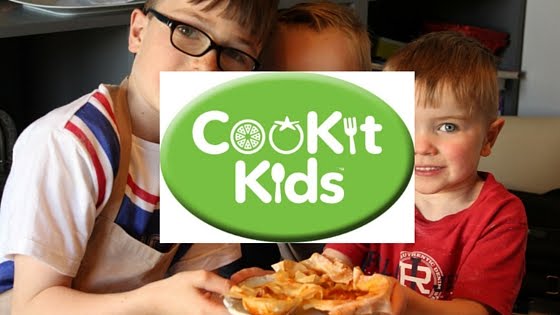Most children have phases during
childhood when baking or cooking is a keen interest. This natural curiosity
provides parents with the perfect opportunity to capitalize on a great learning
experience - the art and science of cooking.
Sadly, many adults do not cook,
citing lack of knowledge, not enough time to cook or shop, or having someone
else in charge of cooking. In a world where home cooked meals equal healthier
fare, teaching kids to cook becomes a critical element of parenting.
It's never too late, or too
early, to begin the learning curve in the kitchen. For instance, during
infancy, babies watch and absorb the activities of their surroundings. Naming
foods aloud and hearing the whir of the blender stimulates baby's learning. The
toddler figures out how things work and learns from simple tasks such as
pouring and mixing ingredients together. Not a tidy task to take on, but
nevertheless, a fun and stimulating one for toddlers. From around 3 years of age
they have better fine motor skills that allow cracking eggs, and measuring dry
and wet ingredients. From about 6 onwards you can take it up a notch with basic
techniques like whisking, Tweeners can hone knife skills cooking at the stove
top (with supervision) and begin to independently follow recipes. Lastly,
teens, who naturally want more freedom, can gain it in the kitchen with simple,
pleasing recipes like homemade cookies to more complex aspirations such as
cooking an entire meal for the family.
In my cooking school I teach
children from the age of 4 to not only bake but to cook appetisers and meals.
We keep it age appropriate, fun and interactive and the enthusiasm and sense of
pride with the finished recipe is wonderful to witness.
I have meal kits available for
purchase on my website for kids everywhere to do at home, because you are never
to young (or old!) to learn to cook! www.cookitkids.com and you
will find lots of recipes from my kids cooking classes here.
Not only are kids of all ages
interested in what goes on in the kitchen, there are many benefits from getting
involved. Here's just a short list of the wisdom that gets passed on when kids
cook:
1.
Math Skills: Doubling
a recipe requires addition (or multiplication) skills, halving it requires
division, and recipe fractions like 1/2 cup and 3/4 teaspoon bring maths
applications into the kitchen. Often, kids don't recognize they are practicing
maths!
2.
Comprehension: Reading
and understanding step-by-step directions, adding ingredients in sequence, and
techniques such as folding and blending, are all important components to
yielding the finished food product. Helping your child fine tune their reading
comprehension skills at the same time doesn't hurt!
3.
Real Life Science: Cooking
is a science experiment. Too much salt, baking powder, not enough flour, or the
wrong timing and you're likely to have a flop on your hands. Cooking provides
an opportunity for kids to get hands-on experience with basic science.
4.
Self-Esteem: Cooking
allows kids to get instant feedback, which helps them learn and grow in
self-knowledge. Learning a new skill, such as baking or cooking, is known to
help children with healthy self-esteem development.
5.
Communication: A relaxed
atmosphere in the kitchen offers an opportunity to talk, about anything!
Parents can take advantage of this, especially with teens, as communication is
a key element to raising a well-adjusted, healthy child.
6.
Life Skills: Cooking
is a life skill, much like driving a car, learning to read, or swimming. As
children grow and get closer to adulthood, the job of feeding becomes theirs.
Start the cooking lessons at a young age so the transition to adult cook is
easy later on.
7.
Fun! Last but
not least, cooking is fun! Having fun with your child in the kitchen builds
positive memories, good vibes, and good food. With all the benefits of teaching
kids to cook, and no limits with starting, what are you waiting for?
Enjoy! Jill Stout,
Founder, CookIt Kids and Jill’s Kitchen Cookery School







